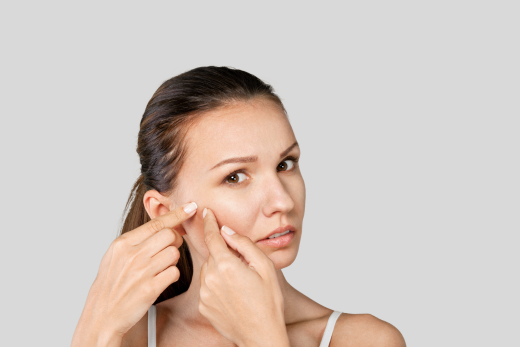Barrier repair has become quite the buzz word in the beauty world, as more and more people come to realize that things that might bring short-term effects on the skin, do not always equate to positive benefits in the long run. Many of us might have the beginning stages of a disrupted barrier without even realizing it, as the body often tends to send gentle signs at first, increasingly turning up the volume of its complaints when we don't listen.
Moisture barrier function
Our skin fills a multitude of functions, but in short: we want it to keep the bad stuff out and the good stuff in. The outermost layer of the skin, the stratum corneum, is made up of skin cells called corneocytes, which are bound together by lipids (cholesterol, ceramides, and fatty acids). This makes up the layer that protects your body from the outside world and prevents too much water from evaporating from the skin.

When we use harsh, drying products, overexfoliate and/or overwash the skin, use chemical peels, etc. the balance and the pH in the skin can get disrupted and the moisture barrier is simply less able to do its job properly.
Transepidermal water loss (TEWL) increases and your skin can feel dry, itchy, and more reactive. When super gentle, non-active products start to sting after application, it can be another indication that the lipid content in the skin is running low and your skin is needing some extra care. (It's a bit like with badly sunburnt skin immediately after applying soothing aloe: the skin can start to feel a little red and warm as the skin slurps up all of the moisture).
Lifestyle habits and stress can help to make matters worse. Our bodies, like eco systems, are impressively resilient, but once things start to shift and we push things too far, the negative effects are quite noticeable.

So what can you do to fix the problem?
1) Less is more
When it comes to repairing a disrupted skin barrier, the first thing is to simplify your skincare routine for a few weeks until the skin has recovered. Pause using actives, exfoliators, and other harsh products (especially those that act by removing from the skin, such as exfoliators and peels, rather than adding moisture) and opt for gentle, deeply moisturizing products to help give your skin a break.
2) Replenish with lipids

When the balance in your skin between corneocytes and lipids has been disrupted, it's important to replenish the skin's lipid levels to avoid that dry, depleted feeling. Essential fatty acids are lipids that are critical for healthy functioning, but that the body cannot produce on its own.
The Pure Nilotica Melt is a super gentle (and so clean you can eat it!), one-ingredient healing balm that is brimming with essential fatty acids and skin-loving vitamins - helping your body restore the lipid balance in your skin. In fact, it contains 25% more essential fatty acids than traditional Shea butter, which is commonly lauded for its moisturizing capabilities.
By adding more essential fatty acids to the skin, you power-charge the skin's natural healing. The Pure Nilotica Melt furthermore acts as an occlusive, meaning it forms a thin protective barrier to prevent transepidermal water loss (TEWL) and keep the skin deeply moisturized.
3) Patience, patience, patience
As much as we'd like our skin to bounce back right away, it might take a little while for the body to get back on track. A few weeks to, sometimes, a few months (depending on the level of imbalance) is perfectly normal as the skin regenerates and the balance is restored.
Move slowly and only start to reintroduce some of the more intense products after you see that the skin can handle it (and even then, use caution and look through which products genuinely help your body in the long run). Don't hesitate to email us on hello@lxmi.com for help on your journey back to glowing, healthy skin.





